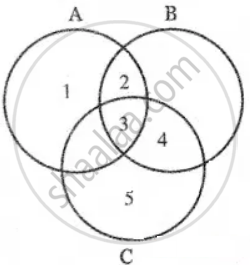Advertisements
Advertisements
Question
By taking suitable sets A, B, C, verify the following results:
C − (B − A) = (C ∩ A) ∪ (C ∩ B')
Solution
To prove the following results let us take U = {1, 2, 5, 7, 8, 9, 10}
Let A = {1, 2, 3) , B = {2, 3, 4) , C = {3, 4, 5}
B – A = {2, 3, 4) – {1, 2, 3}
B – A = {4}
C – (B – A) = {3, 4, 5} – {4}
C – (B – A) = {3, 5} .....(1)
C ∩ A = {3, 4, 5} ∩ { 1, 2, 3)
C ∩ A = {3}
B’ = {1, 5}
C ∩ B’ = {3, 4, 5} ∩ {1, 5}
C ∩ B’ = {5}
(C ∩ A) ∪ (C∩B’) = {3} ∪ {5}
(C∩A) ∪ (C ∩ B’) = {3, 5} ......(2)
From equations (1) and (2)
C – (B – A) = (C ∩ A) u (C ∩ B’)
APPEARS IN
RELATED QUESTIONS
Write the set {−1, 1} in set builder form
By taking suitable sets A, B, C, verify the following results:
A × (B ∩ C) = (A × B) ∩ (A × C)
By taking suitable sets A, B, C, verify the following results:
A × (B ∪ C) = (A × B) ∪ (A × C)
By taking suitable sets A, B, C, verify the following results:
(A × B) ∩ (B × A) = (A ∩ B) × (B ∩ A)
By taking suitable sets A, B, C, verify the following results:
(B − A) ∩ C = (B ∩ C) − A = B ∩ (C − A)
By taking suitable sets A, B, C, verify the following results:
(B − A) ∪ C = (B ∪ C) − (A − C)
Choose the correct alternative:
If two sets A and B have 17 elements in common, then the number of elements common to the set A × B and B × A is
Choose the correct alternative:
For non-empty sets A and B, if A ⊂ B then (A × B) ∩ (B × A) is equal to
